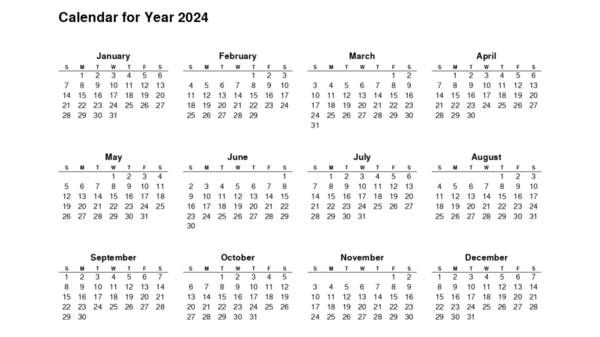The 12 Months of the Year
A year is divided into 12 months in the modern-day Gregorian calendar. The months are either 28, 29, 30, or 31 days long.


The Gregorian calendar is made up of 12 months, each between 28 and 31 days long.
Each month has either 28, 30, or 31 days during a common year, which has 365 days. During leap years, which occur nearly every 4 years, we add an extra (intercalary) day, Leap Day, on 29 February, making leap years 366 days long.
This is to keep our current calendar aligned with the solar year and astronomical seasons marked by equinoxes and solstices.
The 12 Months
The Gregorian calendar consists of the following 12 months:
- January - 31 days
- February - 28 days in a common year and 29 days in leap years
- March - 31 days
- April - 30 days
- May - 31 days
- June - 30 days
- July - 31 days
- August - 31 days
- September - 30 days
- October - 31 days
- November - 30 days
- December - 31 days
Tracking the Moon’s Orbit
The months originated as a way to mark time and break up the year into shorter periods based on the Moon’s orbit around Earth. The word month is even derived from the word Moon.
As far as we know, months were first used in Mesopotamia sometime between the years 500 BCE and 400 BCE to measure the natural period related to the lunar month, or synodic month, which is the time it takes for the Moon to go through all the Moon phases.
How Many Have 28, 29, 30, or 31 Days?
The Gregorian calendar has 4 months that are 30 days long and 7 months that are 31 days long. February is the only month that is 28 days long in common years and 29 days long in leap years.
From 10 to 12 Months
Our current Gregorian calendar and its predecessor, the Julian calendar, both have 12 months. However, the month names we use today are derived from the Roman calendar, which initially had only 10 months, with the calendar year starting in March (Martius).
The Romans named some of the months after their position in the calendar year: September means the 7th month, October the 8th, November the 9th, and December the 10th month. However, when January and February were eventually added and the beginning of the calendar year was moved to January, the position of these months no longer corresponded with the original meaning of their names. Today, we still call the 9th month of the year September, the 7th month.
The Islamic calendar, the Hebrew calendar, and the Hindu calendar also use months to divide up the year. Although the Gregorian calendar is the most commonly used calendar today, other calendars are still used in many parts of the world to calculate certain holidays and annual feasts.
Old Names of Months
Months in the ancient Roman calendar include: